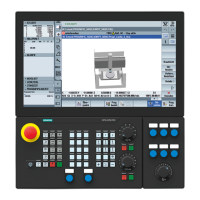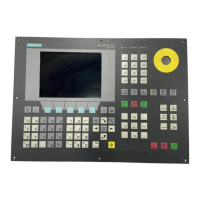It is recommended that the version file in /user/common/tcu be changed manually as this is
only read-in once by the DHCP server at the start. An incrementing of the version would then
only take effect at a cold restart.
Note
This command can be performed on any machine in the system network, not only on the active
server. A message is always sent to the active server.
2.5.9 Enable
Description
Syntax: sc enable hmi|nck|SUBSYSTEM ...
sc enable DHCPSvr -INTERFACE
sc enable DHCPSync [-X120] [-PRIORITY]
sc enable IPAlias [-X120] IPADDR[/NETMASK]
sc enable usb [-MINUTES] all | HOSTS
Alternative names: ---
Authorization level: service
The "sc enable" command switches on the specified subsystems such that these are also
activated when a subsystem is started. You can also switch several subsystems on with a
single "enable" command. "hmi", "nck" or any other subsystem names can be used for the
subsystems.
Note
The "sc enable" command acts on the parameters in the basesys.ini file located in the card/
user/system/etc/basesys.ini directory.
"sc enable IPAlias" defines a second alias IP address for a network interface. This is only
supported for X120. The IP address itself has the usual notation with four numbers separated
by decimal points. If not specified, the subnet mask can be determined from the class (A/B/C)
of the IP or determined explicitly. The CIDR notation (number of bits of the network section)
is also possible.
See also
"InternalIP_Alias" and "InternalNetMask_Alias" parameters in the "basesys.ini" file.
Special subsystems
The "DHCPSvr" name is a special case. This does not switch a normal subsystem on or off,
but specifies whether or not a DHCP server should be started on a network interface. The
interface is entered in the standard form.
Configuring the system
2.5 Description of the actions
NCU operating system
Commissioning Manual, 12/2017, 6FC5397-1DP40-6BA1 49

